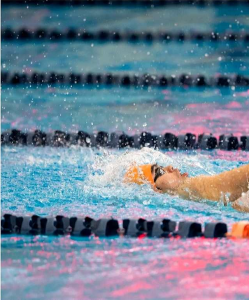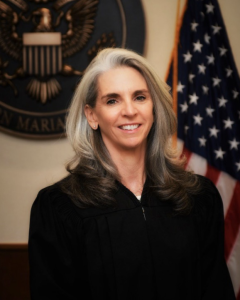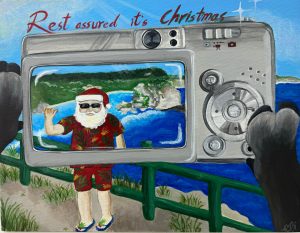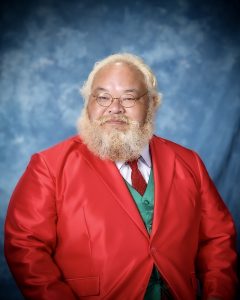Operation Tearaway, the Battle for Saipan
The U.S. did not start the Pacific War, much less the Battle for Saipan. Japan gets full credit for the death and destruction that resulted from the American invasion and capture of Saipan.
In a very real sense, the battle for Saipan began on Dec. 7, 1941, Pearl Harbor time. Only three hours later, across the International Date Line, Japanese naval aircraft from Saipan’s As Lito Airfield bombed Naval Station Guam— Sunday, Dec. 8—during the celebration of Our Lady of Camalin.
Two and half years later, on June 15, 1944, the newly reconstructed U.S. Fifth fleet, including some of the battleships sunk at Pearl Harbor, poured thousands of tons of American steel on Japanese Saipan.
At 0542 Admiral Turner gave the order to land the landing troops. The assault elements of 121st Naval Construction Battalion (the CBs, better known as Seabees), having trained with Marines and wearing Marine uniforms landed with the 4th Marine Division on Blue Beaches No. 1 and No. 2, just south of the sugar dock in Chalan Kanoa.
The heavy cruiser USS Indianapolis was among the several big ships firing big guns with big shells over the heads of the Marines as they approached the landing beaches. During the initial phases of the assault, these Seabees also acted as infantry and participated in combat patrols; 10 were killed and 69 wounded, but they got the job done. The “Fighting Seabees” proved their worth many times over at Saipan.
The 18th Naval Construction Battalion served the same duty with the 2nd Marine Division, landing just north of Sugar Dock as Marines in Marine Corps uniforms.
The last wave came ashore at 11:05am by which time 8,000 Marines were fighting for their lives on Saipan. The Japanese fought hard and to the death. The 6th Marine Regiment suffered 35% casualties, a little over one out of every three men killed or wounded that first day.
Among those 8.000 Marines were African-American Marines from the 7th Field Depot, including the 18th, 19th and 20th Depot Companies. By signing Executive Order Number 8802 in 1942, President Roosevelt had authorized enlisting African-Americans into the Marine Corps. The first units trained were incorporated into “defense battalions” intended to defend captured forward bases. In the case of Saipan, that directive put Black Marines on the offensive in combat for the first time in WWII. Several paid the ultimate price.
At about 1pm, the Marines who continued to drive east from the beach road ran into a swamp surrounding Lake Susupe. With every man needing a rest, they were ordered to dig in for the night. The stench of dead bodies, or pieces of bodies, Japanese and American, became overwhelming. About 10% of the American landing force had become casualties—over 2,000 Marines had been killed or wounded. Although the beachhead was 10,000 yards long, it was narrow. The first day’s objective, the O-1 line, would not be reached for another three days.
That night, the Japanese launched a counterattack. It was a long and frightening experience, with the Japanese coming out of the jungle in strength to attack the Marine lines over and over again from different angles. One attack was supported by tanks.
Gunnery Sergeant Robert H. McCard, 4th Tank Battalion, was awarded the Medal of Honor, posthumously, “for remaining alone at his disabled tank, and firing upon the enemy in order that men of his crew might make good their withdrawal.”
Spruance made a key decision. He was informed that the Japanese fleet was coming out to fight. To ensure the Marines on Saipan had all the support they might need, General Holland Smith, USMC, gave orders to land the floating reserve, the 27th Infantry Division (less the 106th Infantry Regiment) on the southern beaches near Agingan Point. They were to relieve the right flank of the 4th Marine Division and capture As Lito Airfield. Due to the impending naval battle, all transport ships were ordered to weigh anchor and put to sea, not to return until June 25.
Spruance postponed the invasion of Guam, originally scheduled for June 18, allowing time for a new floating reserve, the Army’s 77th Infantry Division, to arrive from Hawaii. Spruance sent all remaining unnecessary ships to the east side of Saipan and Tinian in case Admiral Jisaburo Ozawa, commander of the Japanese Mobile Fleet, divided his ships to try an end run.
The pending Battle of the Philippine Sea was bad news for Guam. The preinvasion bombardment of Guam had already begun, revealing the planned landing beaches to the Japanese defenders. In the five weeks it would take commence operations in Guam, the Japanese visited horrific atrocities against Guam’s Chamorro population.
The invasion of Tinian was tentatively set for July 24.

Don A. Farrell is an educator, local historian, and author based on Tinian. He is known for his research and publications on the history of the Mariana Islands with an emphasis on World War II.
African-American U.S. soldier during World War II.
-CONTRIBUTED PHOTO

A Japanese light tank.
-CONTRIBUTED PHOTO

LVTs move toward Saipan, past bombarding cruisers on June 15, 1944.
-CONTRIBUTED PHOTO

Saipan burning after the U.S. Navy bombardment, left is the sugar mill in Chalan Kanoa.
-CONTRIBUTED PHOTO

The Sugar Dock and pontoon pier in Chalan Kanoa.
-CONTRIBUTED PHOTO




